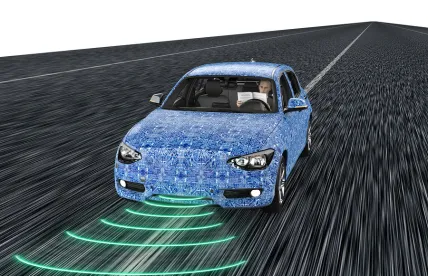There are long lists of industries that will be disrupted by Autonomous Vehicles. Not surprisingly, Insurance is expected to be one of them. Some see tremendous opportunities arising from the increase in Autonomous Vehicles. For example, a 2017 report from Accenture and Stevens Institute of Technology, estimated that new insurance requirements and products could raise $81 billion (billion, with a “B”) in revenue between 2020 and 2025. This may seem counterintuitive: more autonomy, better safety systems and less driver error should lead to fewer crashes and accidents. This should mean fewer claims paid resulting in lower premiums. That translates to less revenue in premiums. So where is the new revenue coming from?
First, one must consider who will own these vehicles. Accenture and Stevens Institute of Technology predict that Autonomous Vehicles will not be individually owned as much but OEM owned. Premiums for simple liability insurance from vehicle owners will of course plummet – by as much as $25 billion.
But then there are the new opportunities! Cyber security insurance will be a requirement for manufacturers and OEM owners. Hacking is already a concern with vehicles and they are far from fully autonomous. The more systems become integrated, the more systems connect to the internet-of-things, and the more systems are software based instead of hardware, the bigger this concern will be. These vehicles are going to collect a virtual treasure trove of personal and use data. Data breaches are already so common that writers rank them by severity. Not only will a breach expose someone’s personal information, but it will expose all the linked accounts in the vehicle and the entire driving history of that vehicle. The liability for any company that suffers that data breach is incalculable. OEMs and their suppliers will also have to alter their product liability insurance. Those in the sensor and software industry are going to need to bulk up on their product liability insurance; another potential avenue for growth.
Insurance industry disruption is at its earliest stages, but it already has a name: InsurTech. While new, it already has its own conference, Insuretech Connect. While only about 10 years old, this is already a $2.6 billion sub-industry. Most recently, California-based Avinew received $5 million in funding. Avinew’s technology uses artificial intelligence and telematics to gather driving data that can tell when a vehicle is in autopilot mode or is using advanced safety features. This allows the company to reward drivers who use the safety features. The company ran a pilot of Tesla drivers and “nearly 7 in 10 participating Tesla drivers said they’d consider switching to an insurance policy that included a discount for Autopilot usage”. Of course, it is just this kind of data gathering that is going to require companies like Avinew, the insurers working with them, and the OEMs to have robust cybersecurity protections and insurance themselves.
Another area of insurance changes will be with respect to infrastructure. Autonomous vehicles must connect with a whole new world of sensors, systems, servers, etc. As of now, most automotive infrastructure is government owned. Will it still be? Accenture and the Stevens Institute forecast that this infrastructure will be owned by manufacturers or service providers. This could be true as the data in that infrastructure will be valuable. However, if they own the infrastructure, they will own the liability for it. This means that they will have to insure for failures due to malfunction, hacks, disruptions, etc. If the government continues to own such infrastructure, the costs of building and maintaining it will have to be covered in addition to the cost of maintaining basic roads. As recently as 2017, the American Society of Civil Engineers gave U.S. infrastructure a grade of D+. Such degradation of the nation’s roads and bridges raises concerns should government also be responsible for the infrastructure necessary for all these vehicles to be autonomous and connected.
Regardless, the auto insurance industry is likely to change. The revenue stream is likely to shift. When it happens and how it happens is just another question of disruption that is open in the automotive industry.




 />i
/>i

